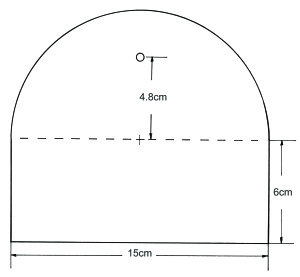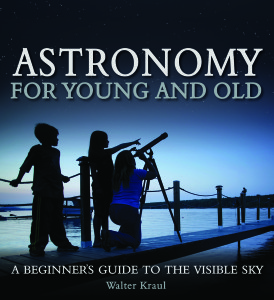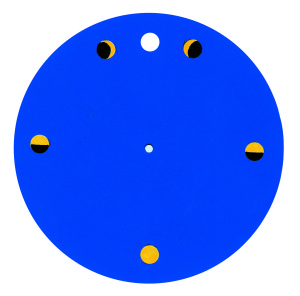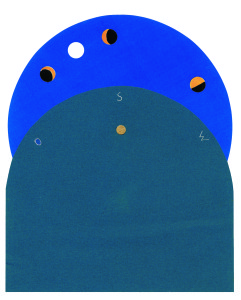Stargazing fun for little ones: how to make your own Lunarium!
by Floris Books • 19 March 2015 • Astronomy, Steiner-Waldorf Education • 0 Comments
If you tuned into BBC for Stargazing Live with Professor Brian Cox last night and have been inspired to do some stargazing of your own, we’ve got just the thing for you. Today we’re sharing a fun, family activity from Walter Kraul’s Astronomy for Young and Old, the perfect introduction to astronomy for children.
Here at Floris we’ve been picking up some great naked-eye astronomy tips from the book and have even learnt how to make our very own lunarium. So we thought we would show you how to make one for yourself!
If your budding stargazers and astronomers have ever asked you why the moon seems to follow them home, or why it is always changing shape, this is the perfect activity to help them understand the phases of the moon. It’s fun, simple and easy to do!
All you need is:
- Some card (blue and another dark colour)
- White and yellow paper
- A split pin
- Adhesive
- A pair of compasses
- Scissors
- Fine felt-tipped pens (ideally black and white)
And, of course, a little bit of patience!
1) Firstly, to make the sky, take your blue card and draw a circle with the compasses of 7.5cm (3in) radius. Then all you need to do is cut it out.
2) Cut the horizon out of the dark card as shown here. 
3) To make the sun, cut a disc of about 10 mm (½ in) diameter out of white paper.
4) Cut 5 similar sized discs out of the yellow paper – these will be the Moon!
5) Use your black felt pen to colour part of the yellow discs to make two crescent and two half Moons. The full Moon does not need to be coloured.
6) Stick the Sun and Moon discs in the right positions as shown below. Make sure the full Moon is exactly opposite the Sun and the half Moons are exactly at right angles.
7) Pierce a hole in the centre of the blue disk and in the marked place of the horizon disc.
Your finished lunarium should look something like this!
You can now use your luminarium to help you understand the phases of the moon!
Turn the disc clockwise to show the daily movement. This lets you see when and where the Moon rises in relation to the Sun at different phases. If the white Sun is visible, it is daytime! This lunarium shows five different phases at once.
For a southern hemisphere lunarium mark West, North and East (instead of E S W) and turn the disk anticlockwise to show the daily movement.
Keep in touch with us on our Facebook page and @florisbooks to let us know how you got on making your very own lunarium. We hope you’ve enjoyed Stargazing Live as much we have!
 You can find even more stargazing tips and activities, in Kraul’s Astronomy for Young and Old, including how to make your own planisphere to track when constellations are visible. The book is full of handy tips for stargazing enthusiasts and is a great way to get children interested in astronomy, whether or not they have a telescope!
You can find even more stargazing tips and activities, in Kraul’s Astronomy for Young and Old, including how to make your own planisphere to track when constellations are visible. The book is full of handy tips for stargazing enthusiasts and is a great way to get children interested in astronomy, whether or not they have a telescope!

